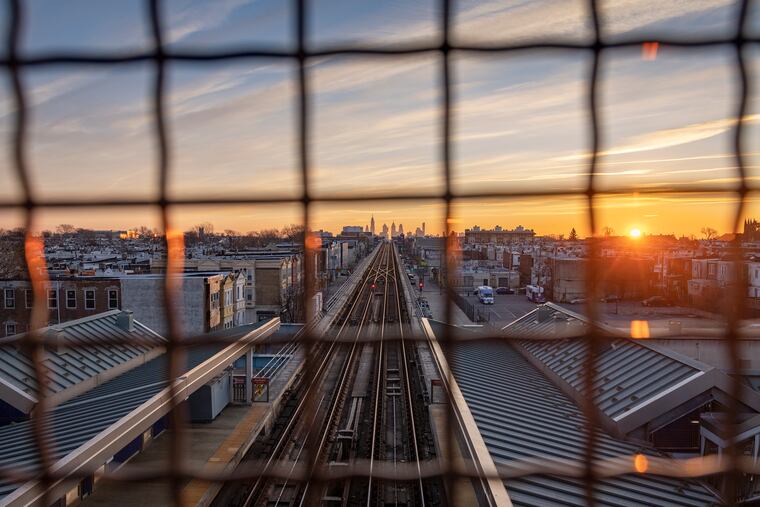The clocks go back Sunday morning. Even if you dread it, here are 5 reasons to welcome the change.
This is the 50th anniversary of an experiment that helps explain why we don't have year-round daylight saving time.

In the micro-instant after 1:59:59 a.m. Eastern Daylight Time Sunday, it magically became 1 a.m. Eastern Standard Time, restoring to Philly and most of the nation the hour they lost in March.
If you’re keeping score, that’s four time changes since the U.S. Senate approved a bill for year-round daylight saving time, and it so happens that this is the 50th anniversary of an experiment that may help explain why the switch goes on.
In the short term, a combination of inertia, indifference, a war here, and an economic downturn there, has all but eclipsed the so-called Sunshine Protection Act authored by Sen. Marco Rubio from the public consciousness.
The Sunshine State Republican has been trying to get year-round daylight saving time enacted for five years. But after seeing some light after the Senate’s “unanimous” approval (it was a procedural maneuver) in March 2022, it has languished in the halls of Congress.
He introduced his bill again in March. Did you notice?
Why the clocks keep changing
Various surveys have affirmed that an overwhelming majority of Americans want to ditch the switch, but public opinion remains divided on which way to go.
The last time the nation tried year-round daylight saving time — starting on Dec. 15, 1973, during an energy crisis — it didn’t go so well. That year the sun didn’t rise on Christmas morning until around 8:20 a.m.; in fact, it didn’t rise before 8 a.m. until February. Parents didn’t particularly like having their children riding school buses on the dark winter mornings. It was so unpopular that Congress pulled the plug on the experiment after 10 months.
Reality time
For now, it’s a safe bet the clocks will spring forward again in March and fall back in November next year, perhaps indefinitely. Thus, we would recommend not only accepting the fact that the sun will set before 5 p.m. Sunday for the first time since Jan. 14, but embracing the considerable bright sides of the lengthening nights.
Here are a few:
Standard time is better for us
So say the sleep experts and “chronobiologists,” such as the University of Munich’s Till Roenneberg. He insists that switching to daylight saving time disrupts our bodily rhythms and exacerbates “social jet lag,” in which we tend to overdraw from the sleep bank during the work week and try to pay it all back on the weekend. The National Sleep Institute and the American Academy of Sleep Medicine all vehemently oppose daylight saving time and call for year-round standard time.
Good morning sunshine
Starting Sunday, fewer of us will be getting up in the dark, and that can be morale booster. A desire to eat and sleep, not necessarily in that order, this time of year is normal, the experts tell us. However, for some people the loss of light can lead to the more-troublesome Seasonal Affective Disorder and depression. One antidote, according to a research team led by SAD pioneer Alfred J. Lewy, would be light “immediately on awakening.” And what could be better than the natural light of the sun?
By the light of the moon
While we continue to lose daylight, this is harvest time for lunar connoisseurs. The sun and moon have an astronomical seesaw relationship, so when the sun is lowest in the sky, the moon is highest, and the less time the sun shines, the more the moon does. The full moon always rises around sunset and sets around sunrise, and the next two will be occurring during the holiday season, on Nov. 27 and Dec. 26. It will be beaming high and long on those nights and several before and after. And with fewer leaves obscuring the light, the moon will highlight those beautifully intricate branches that will cast their delicate shadows.
It just got lighter
In partnership with the evermore oblique light of the sun as we approach the winter solstice, those bare trees also will make those walks in the woods that much brighter, and more light will be pouring through the windows in houses and buildings in wooded areas.
Northern Lights here, at last?
While we’ve had a few close calls, the northern lights have been flashing well north of here. Last week, however, NOAA’s Space Weather Prediction Center said it expected the current 11-year solar sunspot to peak sooner and more robustly than it had previously predicted. That suggests better prospects for the solar storms that can produce the aurora effects. Sunspot activity is forecast to increase, cresting between January and October.
A bonus point
This is, indeed, the longest weekend of the year, a full 49 hours.
We’ll have to pay it back when the clocks move up in March, but it wouldn’t hurt a presidential candidate to propose moving that spring-forward moment to the middle of a workday.